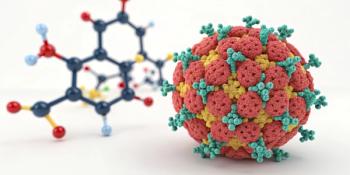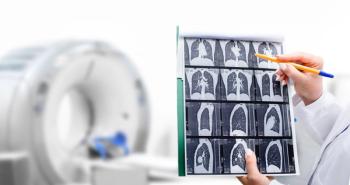
Early Identification of CRSwNP Recurrence After Surgery Possible With Regular Follow-Up Exams
Adherence to follow-up examinations is crucial for early identification of recurrence of chronic rhinosinusitis with nasal polyps (CRSwNP).
Patients who undergo functional endoscopic sinus surgery (FESS) to treat chronic rhinosinusitis with nasal polyps (CRSwNP) may experience a recurrence of symptoms. After undergoing FESS, follow-up examinations are crucial to identify recurrence early for prompt treatment, according to a study
Patients who are refractory to treatment can receive FESS, a minimally invasive procedure; however, recurrence can be 60% or higher: research has found the 5-year recurrence rate is 30.29% and the 10-year recurrence rate is 66.06%. In this study, the researchers analyzed recurrence of CRSwNP after FESS.
CRSwNP is a type 2 inflammatory disease of nasal and paranasal sinuses that is treated with intranasal and systemic corticosteroids, biologic agents, and FESS in patients who are refractory to therapy.
“Clinical examinations following FESS are critical for physicians to assess results of the intervention, to monitor for post-procedural complications, to early identify recurrences, and to tailor medical therapy,” they explained. “These examinations also provide patients the opportunity to discuss symptoms and their impact on quality of life.”
A total of 60 patients who underwent FESS were included. They had a mean follow-up of 9.88 years (range of 3 to 22 years). The mean age of patients included was 57 years (range of 23 to 74 years). Nearly half (48.3%) also had allergy and 36.7% had asthma.
A quarter of patients adhered to periodic clinical examinations and regular treatment with nasal steroids. A majority (78.3%) conducted daily nasal washings with isotonic saline solution.
“This low adherence to follow-up examinations and nasal steroid was probably due to insufficient information given to the patients by the surgeons and mostly to the fear of steroids potential side effects,” the authors speculated.
More than half (56.7%) of patients had CRSwNP recurrence at their last follow up, and a total of 91 recurrences were registered after FESS. Of the 91 recurrences, 54.9% of cases were treated with medical therapy and 45.1% were treated with revision endoscopic sinus surgery. There was a mean of 0.14 recurrences per year per subject.
At the last follow-up visit, 45.0% of patients complained of nasal obstruction and 51.7% of hyposmia, or a reduced ability to detect odor. The researchers found no statistically significant difference in nasal symptoms between patients who had recurrence and those who did not; however, patients who relapsed had a trend for higher nasal obstruction.
There was no significant correlation between recurrence at follow-up and age, sex, allergy, asthma, and nonsteroidal anti-inflammatory drug-exacerbated respiratory disease.
In patients who had a recurrence, 12 had grade 1 nasal polyps, 11 had grade 2, three had grade 3, five had grade 4, two had grade 5 and one patient had grade 6.
The researchers also found that patients who underwent regular fiber optic evaluations and prompt treatment when a small recurrence was identified had a lower probability of a recurrence at their last follow-up examination.
“Since small relapses have little or no symptoms, adherence to follow-up examinations with nasal optic fiber endoscopy is crucial to early identify recurrence after surgery and promptly treat it with medical therapy,” the authors concluded. “This is emerging as an even more important issue after the introduction of biologic agents in clinical practice.”
Newsletter
Get the latest industry news, event updates, and more from Managed healthcare Executive.


















































